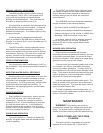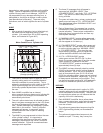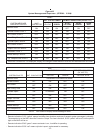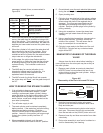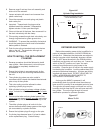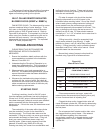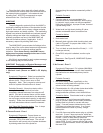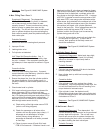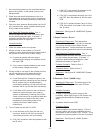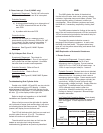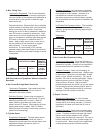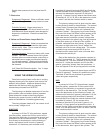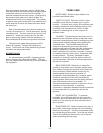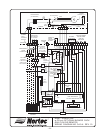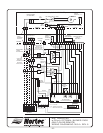
1. No current being drawn on the monitored primary
lead to the cylinder, or the actual current is not
being sensed.
2. Water does not reach the electronics due to a
restricted water supply line or due to a constantly
open/leaking drain valve preventing a water level
increase.
3. High duct static pressure blowing back into the fill
cup (via steam line, empty cylinder) diverting the
fill cup water to the overflow.
Unit Takes Self-Corrective Action:
Yes. It
pulse-activates the drain valve to possibly clear
any dirt holding the seal open. It re-tests. If
symptoms persist after two attempts, it then
responds as shown in Figure #2.
Corrective Action:
1. Check the water level in the cylinder.
2. If there is water in the cylinder (1/5 of a full
cylinder or more) check monitored primary lead to
the cylinder for current with an amp clamp.
a) If current is present with zero output
indicated on the display, the problem is with
the main PCB.
b) If no current is present determine the cause
of the primary voltage interruption.
3. If there is little or not water in the cylinder turn the
unit off and disconnect the steam line at the
cylinder. Reset the unit and monitor filling.
a) If unit fills and Error 5 does not reoccur, the
problem was likely caused by air flow through
the fill system and can be permanently
corrected by installing a U trap on the fill line
between the fill cup and the drain valve body.
b) If unit does not fill, then turn the unit off and
clean and check the drain valve (refer to
section on Mandatory Cleaning of the Drain
Valve in this manual) to ensure that there are
no obstructions or leaks in the drain valve
preventing it from holding water in the
cylinder, and check water inlet for
obstructions.
4. Turn unit back on and see if it will fill.
a) If unit still does not fill, then with the unit
turned on, check for 24 VAC across the fill
valve (there must be a call for humidity).
b) If 24 VAC is present, then the problem is with
the fill valve.
c) If 24 VAC is not present, then check for 24
VAC across 6 and 14 on the PCB.
d) If 24 VAC is not present across 6 and 14 of
the PCB, then the problem is with the main
PCB.
e) If 24 VAC is present across 6 and 14 of the
PCB, then check for a break in the circuit to
the fill valve.
Response:
See Figure #2, NHMC/NHP System
Messages.
7. Output Too Low - Error 6
Symptom(s) Diagnosed:
Time dependent.
Neither Maximal Level (full cylinder) is detected,
nor is there enough current drawn to meet
capacity demand. Current monitored on primary
lead to cylinder greater than zero but decreasing.
Unit Takes Self-Corrective Action:
Yes. It
pulse-activates the drain valve to possibly clear
any dirt holding the seal open. It re-tests. If
symptoms persist after two attempts, it then
responds as shown in Figure #2.
Probable Cause(s):
Refer to Error 3.
Corrective Action:
Refer to Error 3.
Response:
See Figure #2, NHMC/NHP System
Messages.
8. Electronic - Error 7 (NHMC only)
Symptom(s) Diagnosed:
The electronics of the
main PCB have diagnosed the main PCB as
defective.
Probable Cause(s):
1. A spike in the primary power supply to the
humidifier, either high (surge) or low (brown out),
causing the electronics to experience a logic
glitch.
2. A problem with the main PCB.
Corrective Action:
1. Reset humidifier and monitor display. If Error 7
reoccurs within one minute of resetting the unit,
the problem is with the main PCB. If Error 7 is not
repeated, the primary power to the unit is suspect.
Response:
See Figure #2, NHMC System
Messages.
-18-



